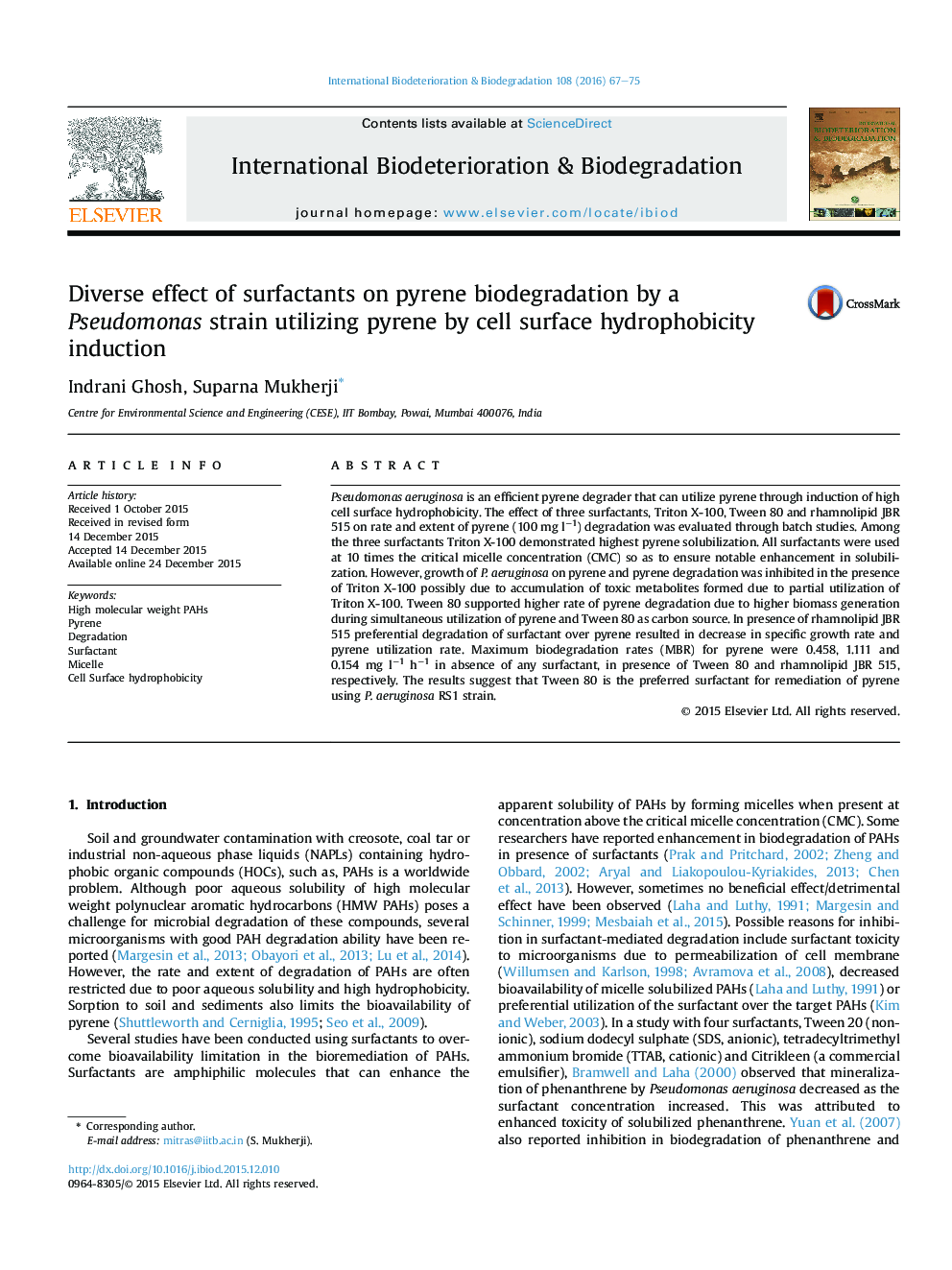| Article ID | Journal | Published Year | Pages | File Type |
|---|---|---|---|---|
| 6289180 | International Biodeterioration & Biodegradation | 2016 | 9 Pages |
â¢Pyrene solubilization in aqueous phase was maximum in presence of Triton X-100.â¢Pyrene degradation by Pseudomonas aeruginosa RS1 was inhibited in the presence of Triton X-100.â¢Tween 80 supported higher rate of pyrene biodegradation.â¢Rate of pyrene degradation was decreased in presence of rhamnolipid JBR 515.â¢Cell surface hydrophobicity was not adversely affected in presence of surfactants.
Pseudomonas aeruginosa is an efficient pyrene degrader that can utilize pyrene through induction of high cell surface hydrophobicity. The effect of three surfactants, Triton X-100, Tween 80 and rhamnolipid JBR 515 on rate and extent of pyrene (100 mg lâ1) degradation was evaluated through batch studies. Among the three surfactants Triton X-100 demonstrated highest pyrene solubilization. All surfactants were used at 10 times the critical micelle concentration (CMC) so as to ensure notable enhancement in solubilization. However, growth of P. aeruginosa on pyrene and pyrene degradation was inhibited in the presence of Triton X-100 possibly due to accumulation of toxic metabolites formed due to partial utilization of Triton X-100. Tween 80 supported higher rate of pyrene degradation due to higher biomass generation during simultaneous utilization of pyrene and Tween 80 as carbon source. In presence of rhamnolipid JBR 515 preferential degradation of surfactant over pyrene resulted in decrease in specific growth rate and pyrene utilization rate. Maximum biodegradation rates (MBR) for pyrene were 0.458, 1.111 and 0.154 mg lâ1 hâ1 in absence of any surfactant, in presence of Tween 80 and rhamnolipid JBR 515, respectively. The results suggest that Tween 80 is the preferred surfactant for remediation of pyrene using P. aeruginosa RS1 strain.
